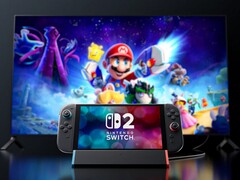Nintendo Switch 2's USB-C Port Uses Proprietary Messages to Block Third-Party Docks
Nintendo's decision to include a USB-C port on the Switch 2 initially sparked optimism among gamers hoping for broader accessory compatibility. However, new technical analysis reveals the gaming giant has implemented proprietary communication protocols that effectively block most third-party docking solutions from working with the console.
The Verge's Sean Hollister conducted extensive testing using USB-C charging analyzers to examine how the Switch 2's port communicates with various accessories. His investigation uncovered that Nintendo's official dock sends proprietary messages when connecting to the console—codes that third-party manufacturers don't have access to. Without these specific authentication signals, alternative docking solutions either fail to work entirely or operate with severely limited functionality.
The technical barrier centers on USB-C's power delivery communication system, which uses structured messages to ensure devices receive appropriate current levels and avoid damage. Beyond power management, these protocols can unlock additional modes, including video signal transmission for docked gaming. Nintendo appears to have layered its own proprietary authentication on top of these standard protocols, creating a digital gatekeeper that recognizes only approved accessories.

Testing revealed one notable exception: the $36 Antank S3 Max TV dock successfully communicates with the Switch 2, suggesting its manufacturers have somehow reverse-engineered or discovered the necessary communication protocols. However, this compatibility may prove temporary, as Nintendo could potentially block the device through firmware updates to its official dock.
The restriction strategy bears similarities to Apple's historical approach with proprietary connectors, though Nintendo's implementation is more subtle since it uses the industry-standard USB-C physical connection. The company could argue that authentication protects consoles from potentially damaging accessories that don't output correct voltage levels—a legitimate concern given the sensitive nature of gaming hardware.
However, Nintendo's own $120 official dock has drawn criticism from users reporting reliability issues. Some owners have experienced frequent Ethernet port disconnections, while others claim the dock's design obstructs the console's ventilation system, potentially leading to overheating problems. These issues highlight the drawbacks of limiting users to a single, expensive accessory option.
Mixed Compatibility Approach
Interestingly, Nintendo appears more accommodating toward other categories of third-party accessories. Pro controllers and gaming headsets generally work without issues, suggesting the company's restrictive approach specifically targets docking solutions rather than representing a blanket policy against third-party hardware.
The discovery raises questions about the long-term accessory ecosystem for Nintendo's latest console. While the USB-C port initially promised universal compatibility with existing adapters and hubs, the reality proves more complex. Gamers seeking affordable docking alternatives or specialized features may find themselves limited to Nintendo's official offering, despite its higher price point and reported reliability concerns.
For now, the Antank S3 Max TV dock offers the primary alternative for budget-conscious users, though its continued compatibility remains uncertain. As Nintendo continues firmware development, the cat-and-mouse game between the company and third-party manufacturers will likely determine whether additional compatible accessories emerge or existing solutions get blocked.
